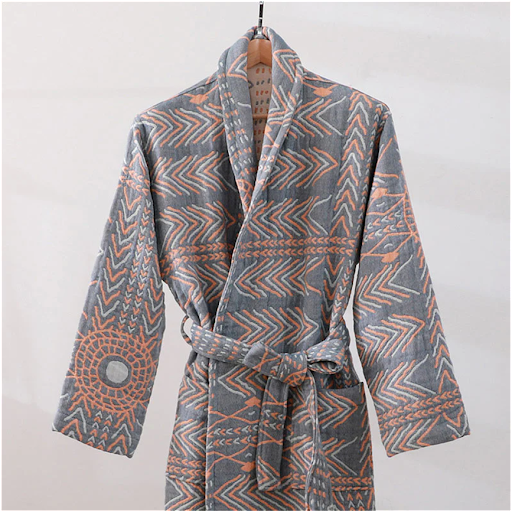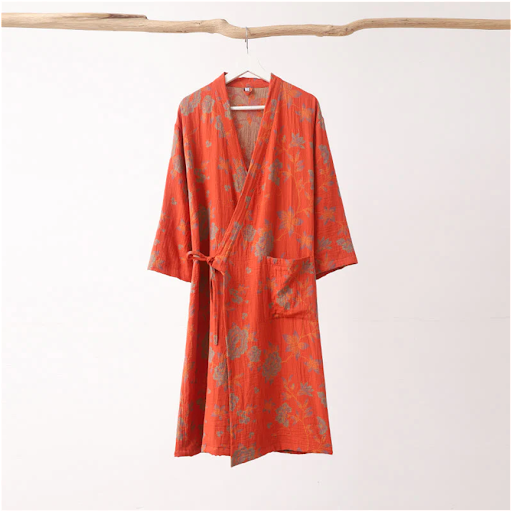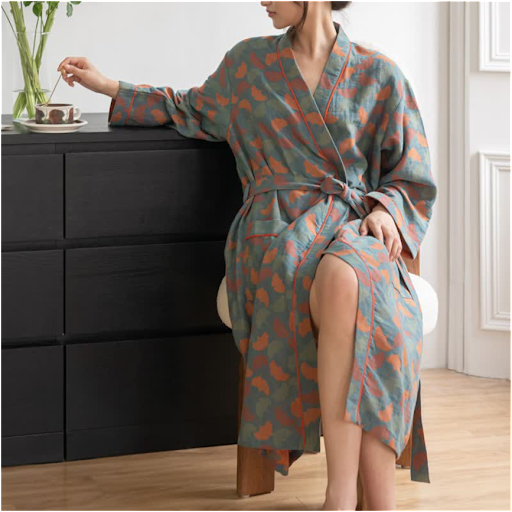The question of how often to replace your bathrobe is one that often goes unnoticed in our daily lives. However, bathrobes are commonly used items in our lives. We all need to wear it after shower in the morning or evening. Bathrobes play a vital role in our comfort, hygiene and style. Let’s dig in and how often should you change your bathrobe? This article will guide you in making an informed decision.
Introduction
We all love that feeling of slipping into a soft, cozy bathrobe after a relaxing bath. It’s more than just a piece of clothing; it’s an experience, a mini-luxury we grant ourselves at the end of a long day. But have you ever wondered how often you should replace this beloved garment? Just as you wouldn’t wear the same shirt for years on end without checking its condition, your bathrobe deserves similar attention. Keeping it fresh and functional is not just about aesthetics; it’s an essential part of maintaining our hygiene and ensuring our comfort.
The Lifespan of Different Materials
Cotton Bathrobes: Cotton is a versatile natural fiber that’s been a staple in the textile industry for centuries. It’s prized for its breathability, comfort and absorbency, making it perfect for use after the shower or bath. Under regular use and with proper care, the lifespan of cotton bathrobes is typically around 2-3 years. However, high-quality cotton robes might last even longer.
Silk Bathrobes: Silk, a luxurious natural fiber, is known for its lustrous sheen and soft touch. Produced by silkworms, it’s a protein fiber that offers unparalleled smoothness. Since silk is a relatively fragile material, its lifespan tends to be short, averaging around 1-2 years.
Microfiber Bathrobes: Microfiber is a synthetic material made from finely woven polyester or nylon fibers. Microfiber bathrobes are generally very durable, with a lifespan reaching 3-4 years.
Satin Bathrobes: These robes have an estimated lifespan of about 2 years, but it might be shorter if they are frequently snagged or stretched.
Bamboo Bathrobes: Being a relatively newer material in the market, they have an estimated lifespan of 2-3 years.
It is worth noting that the lifespan and wear of fabric are closely tied to its care. If you find any problem with the bathrobes, please replace them in time.
Signs of Wear and Tear
Over time, you may find that your bathrobe becomes thinner or feels rough. It may lose its plush and softness. A bathrobe that lacks its initial softness to the touch won’t offer the same level of comfort and luxury. Especially high friction areas such as elbows, underarms, waist, etc. These areas are most prone to pressure and wear. Also, the belt loops and pockets are common places for wear and tear due to frequent tugging and use. If you notice damaged seams or small holes in these areas, then you should consider replacing your bathrobe with a new one.
Hygiene Concerns
A damp bathrobe can become a breeding ground for bacteria or mold. An old robe, especially one that’s lost its absorbency, is more prone to this. The moisture, warmth, and residual skin cells create an environment that bacteria and mold love. Bathrobe is not dried properly, this moisture can lead to the growth of harmful microorganisms. This isn’t just a matter of unpleasant odors; it’s a genuine concern for your health. Worn, torn and damp old bathrobes can pose more serious health risks. Mold spo res , for instance, can cause respiratory issues or skin irritations. Bacteria can lead to infections, especially if you have any open cuts or wounds. If you find yourself feeling damp after wearing your bathrobe for a while, it’s time to consider getting a new one.
Effectiveness in Absorption
Bathrobes are designed to soak up moisture, providing a swift transition from being wet to comfortably dry. Over time, however, the fibers in the bathrobe break down through repeated use and washing. Cotton robes, for instance, might lose their plushness. The once -fluffy terrycloth might become flat, and the loops that effectively wicked away moisture could become compressed. Similarly, microfiber robes might lose their tight weave, reducing their drying prowess. Absorbency is the main function of a bathrobe, and when you find that yours is not absorbing water well, you should consider going to Owkoti for a new one. Made mostly of cotton, Ownkoti’s bathrobes are prized for their style and comfort.

Comfort Factor
Aside from drying, the number one priority of a bathtub is absolute comfort for the wearer. This involves a delicate balance of fabric softness, weight, warmth, and fit. A bathtub from brands like Ownkoti is designed meticulously to ensure it wraps around you like a second skin. It’s there to keep the morning chill at bay as you sip your coffee, or to envelope you in warmth after an evening soak. The robe is an unsung hero in our daily rituals, constantly working to ensure we feel pampered. If you find that your robe no longer offers the solace it once did, perhaps it’s time to rejuvenate your comfort with a brand-new bathrobe.
Fashion and Aesthetics
Beyond the tangible aspects of fabric and comfort, bathrobes play a pivotal role in our personal style and aesthetics. They are an extension of our personality, reflecting our taste and preferences. Fashion is a fluid, and what was a few years ago may be outdated Now. Colors fade, patterns become less pronounced, and the overall appearance can shift from chic to mundane. It’s time we need new bathrobes to suit our preferences. Ownkoti‘s bathrobes are full of fashion sense. Yarn-dyed jacquard pattern caught my eye. Sexy V-neck design. The loose cuffs are cool, and there are pockets for carrying light items. All my needs for bathrobes were met.

Scene use of bathrobe
Over time, multifunctional bathrooms have been associated with countless scenarios in our lives. Think about the morning, you are wearing a bathrobe and the curtains are drawn, the sun is streaming in from the window. You have your first cup of coffee in your hand , and the newspaper is rolled out. This is how your day starts. Maybe it’s gazing at the stars on the balcony in your bathrobe after an evening shower, or sitting in the reading nook with a book. The bathrobe has also found its place by the pool or on the beach. After a refreshing dip, as you lounge by the water, the bathrobe becomes your cocoon, shielding you from the breeze, drying you off, and offering a comfort that swimsuits alone can’t provide. A special day dedicated to self-care – a spa day. As you move between treatments, your bathrobe becomes an essential accessory, offering privacy and comfort.
Economic Considerations
At first glance, holding onto an old bathtub may seem like a cost-saving measure. But compare that to the cost of buying a new bathrobe. A new robe not only reinvigorates your comfort and style but may also prove to be more economical in the long run, with fewer maintenance needs and a longer life span. Premium bathrobes with their superior fabric and workmanship mean they last longer , remain functional, and require less maintenance. In contrast, cheaper, lower-quality robes might need replacement sooner, making their overall cost (when considering replacements) potentially higher over time.
Conclusion
Learn about the service life of bathrobes made of different materials. Pay attention to the signs your bathrobe gives you to change. When there are problems such as damage, hygiene, function, comfort, etc., the bathrobe is to remind you that it is time to replace the bathrobe. Whether it’s the comfort factor, the aesthetics, or the practicality of different scenes, the decision to replace your bathrobe boils down to preserving its value and ensuring your well-being. So, the next time you wrap yourself in your bathrobe, reflect on its condition and consider whether it’s time for a fresh start.
















